Inclusive water, sanitation and hygiene (WASH) systems in off-grid towns are an emerging area of concern as worldwide trends point towards a rapid movement of vulnerable rural populations migrating to towns.
WASH systems for vulnerable populations migrating to the cities have always been a challenging part of doing research. This blog draws on the reflexivity of the researcher while conducting participatory inquiry with migrant populations to engage in deeper critical reflection on the ethical implications of these methods in keeping with Participatory Action Research’s (PAR) roots.
Using visual techniques, we also unpack the multi-dimensional experiences of the research in the Towards Brown Gold project’s field site in Nanded, India, to capture the hidden, latent, and visible aspects of WASH systems.
Nanded, India
Nanded is a culturally significant city in Maharashtra, India, with a major Sikh pilgrimage site at its heart. The city is also well known for the effective Community-Led Total Sanitation (CLTS) approach, implemented by the Nanded Waghala Municipal Corporation in 2011. The Corporation earned ODF+ and ODF++ certifications in 2021.
But has the change been sustained? And more specifically, have the marginalised communities, migrants, and women benefitted from the programme? These were some of the questions that were explored in the study undertaken by SOPPECOM as part of the Towards Brown Gold project between 2021–2022.
Our approach
Given the transient nature of the participants, the research team decided to explore visual methods for the study as any long-term engagement with the population would prove difficult.
The team considered using photographs, photovoice and photo-elicitation as the most appropriate for the study. However, given the participants often moved locations and the absence of a local organisation that could follow up on the research outcomes, the team decided to combine two lenses. First, embedding photography from the researcher’s lens, where the researchers have reflected through the pictures and the accompanying narratives. Secondly, is to garner responses from people using the photo-elicitation method.
A scoping exercise was conducted to identify the location where the migrants usually stay, migration routes, their socio-economic status, and the duration of their stay in Nanded. It was evident that many of them stay in one place only for two to three days, thus making it difficult to meet them again. Two focus group discussions and in-depth interviews with 15 participants were conducted. Documentation of the scoping exercise was done using photography and some explanatory notes to the photos. Challenges were faced while gathering the population’s perceptions, which have been elaborated on towards the end of the blog.
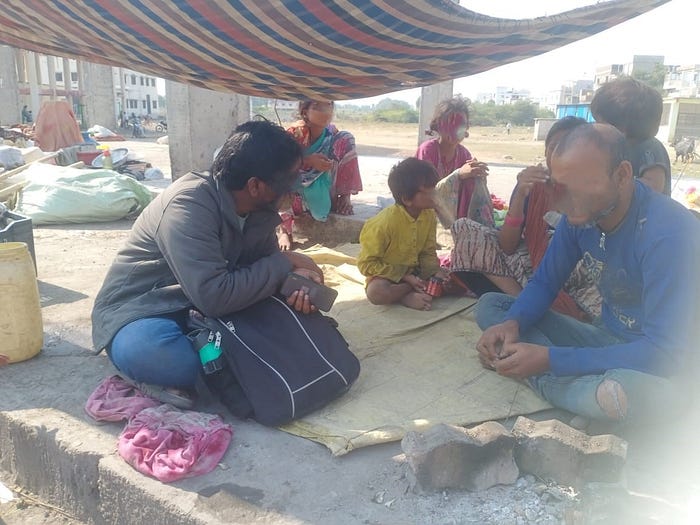
Through these interactions, demographic information was collected including their caste, class and gender, their reasons for migration, and their experiences and practices around access to water and sanitation. Participants represented diversity among the migrants, including from Denotified and Nomadic Tribes (DNT) and Scheduled Tribes (ST) such as Ghisadi, Jogi, and Fasepardhi castes and Muslim communities.
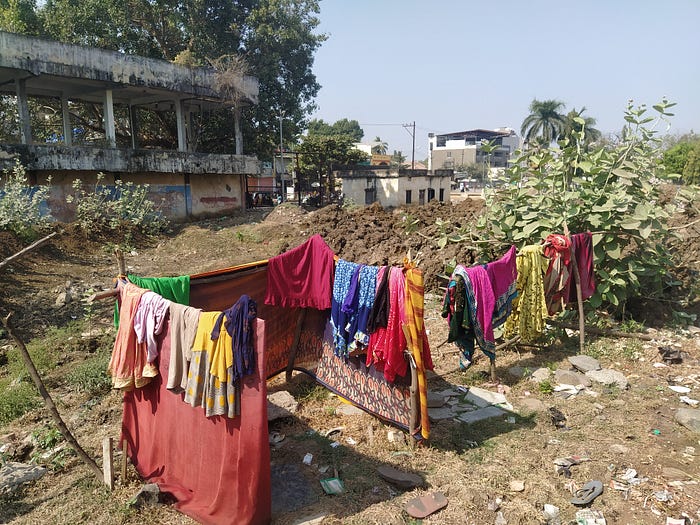
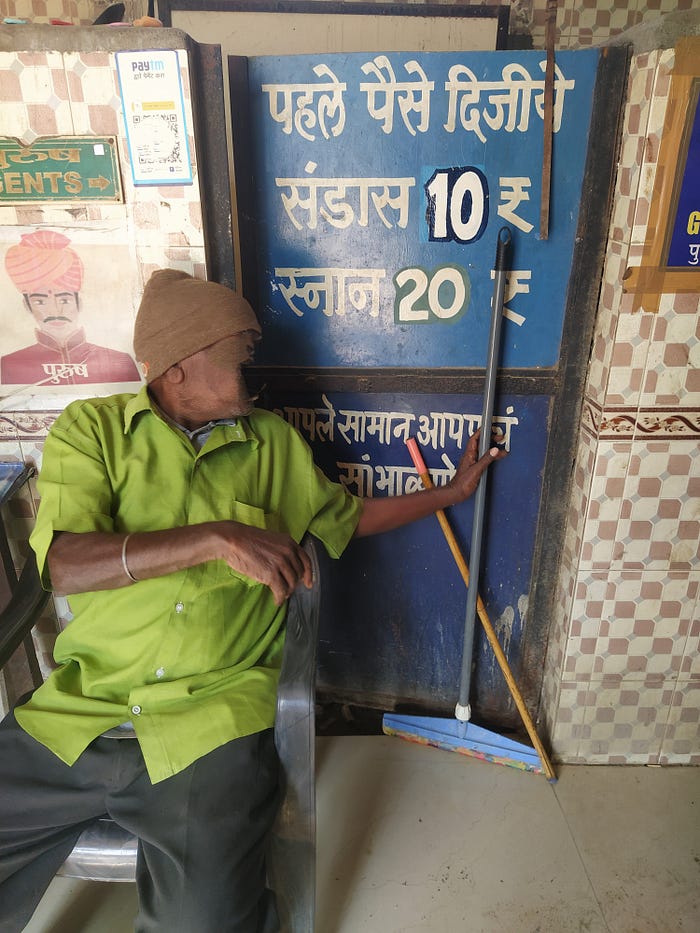
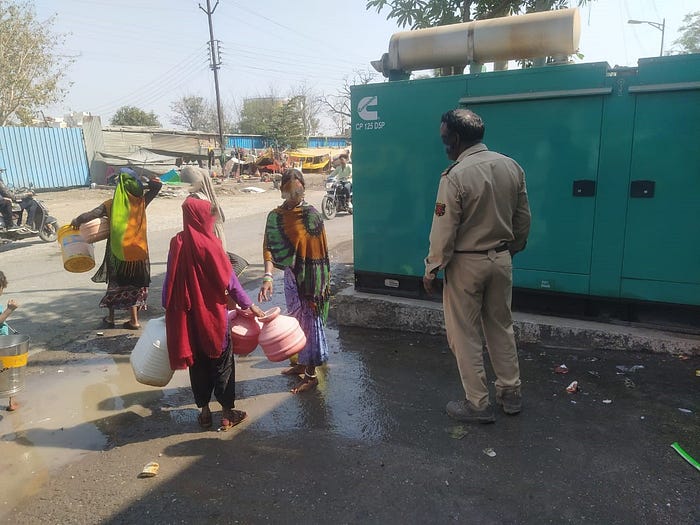
Photos that depicted living conditions, location, and amenities such as shelter, water, and toilets of the migrant communities were selected for the photo-elicitation exercise, along with a checklist of questions.
Reactions and challenges
For most seeing their own photographs was a new experience, but this came with a mixed set of responses.
“Many people come here for inquiries, but they never showed us any pictures.”
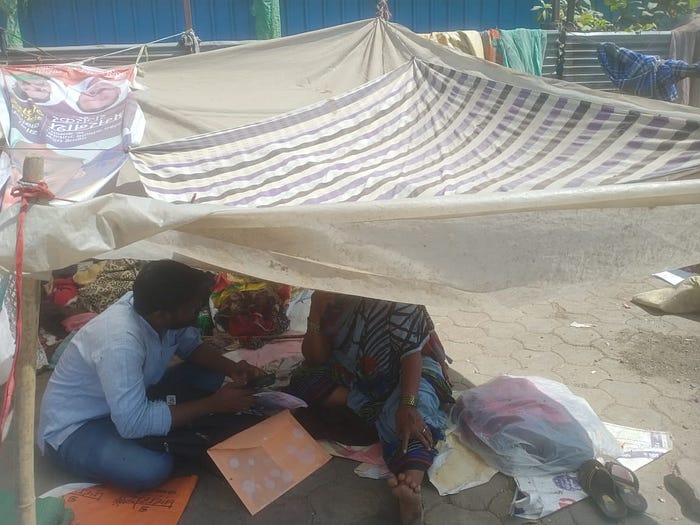
Fear and insecurity
A 21-year-old woman living at a railway station expressed concern about her photo being shared, feeling insecure about her identity being exposed and therefore avoided responding. The crowded environment of the railway station also made the women feel unsafe and distrustful of strangers including the researcher.
Others who were insecure about their living situation hesitated to respond due to fear of eviction if the photos were made public.
No benefits
A 51-year-old man from a Muslim community in Karnataka who had migrated to Nanded, said that people take their photos but they do not receive any help or assistance. Instead, their photos are used to earn money without offering anything in return. He became cautious and avoided looking at the photos making the elicitation process challenging.
In the hope of benefits
In contrast, migrants who returned to the same site every year thought that responding to questions could yield some benefits in housing and sanitation facilities. For example, the individuals belonging to the Ghisadi community who were living in and moving around Nanded for a long time, hoped that they would be provided with a permanent settlement if they responded to the photos. They provided detailed information about water availability, public toilets, and living conditions. They did hesitate, however, to share their experiences around harassment and violence from the police and citizens.
Few stakes in the amenities
For those who are constantly on the move, access to sanitation facilities was not reported to be a priority and they did not find it worthwhile to reply to the questions or the photos. Moreover, they did not think that responding to the researchers would yield any direct benefits to them as they may or may not return to the same place next time.
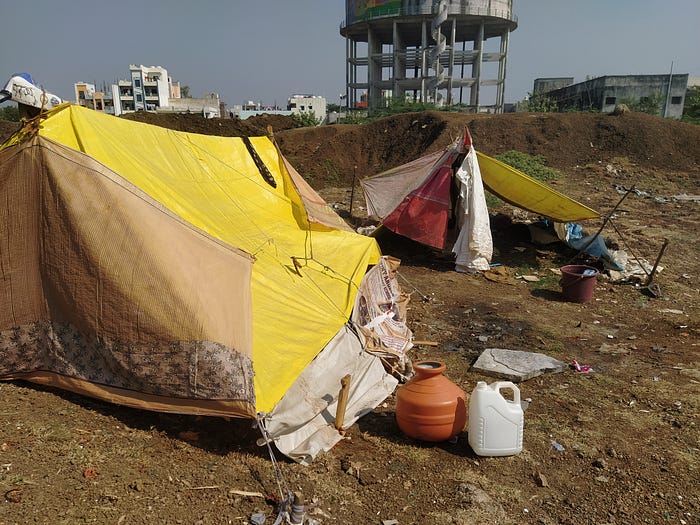
Connecting in crowded spaces during business hours
Families residing in busy spaces like footpaths and railway stations faced discomfort during photo-elicitation due to crowds gathering around. Similar challenges were encountered with hotel owners and watchmen, making the method less effective in crowded urban areas.
Moreover, engaging with the process during their work time was further constraining. Some were selling items on the streets or begging at traffic signals. Often, they worked for 12 hours or more with uncertain daily schedules making it difficult to engage in the photo-elicitation process.
Concluding comments
While visual methods can become a powerful tool in gathering and analysing data, it has the potential of putting disenfranchised populations at risk, particularly when conducted if the needs, wants and dignity of people are not respected throughout the process.
While the embedded ethnography worked very well, using the photo-elicitation method for this study with the mobile population has proved to be challenging. The results are closely dependent on factors such as the participant’s social and economic status, cultural background, suitable environment, time for building rapport, and the time required for elicitation.
But more than what worked and did not work, from the process, we had an insight into the human rights of the participants who migrated into town, their fears, insecurities, how WASH practices and systems are non-inclusive, and lack of elasticity in planning. By embedding the PAR techniques, these hidden issues reveal how uncertainties are experienced and understood differently by the vulnerable migrants and how different they are from the vulnerable settler populations in the town.